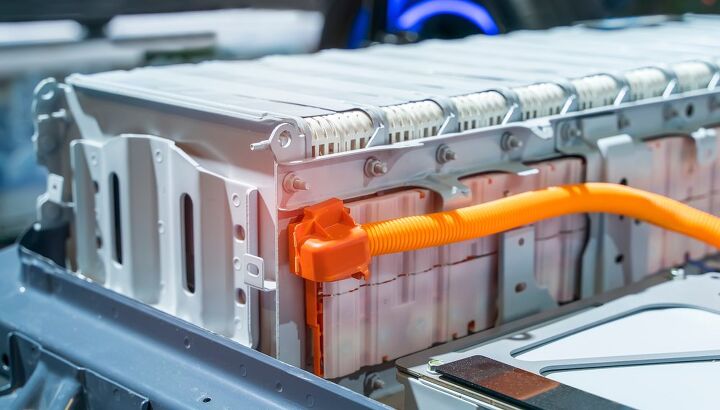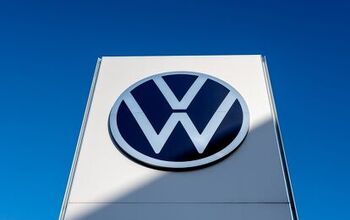Toyota, Stellantis Announce North American Battery Plants

Automakers Toyota and Stellantis separately announced plans to construct lithium-ion battery plants in North America on Monday. With regulatory pressures mounting, the industry has been shifting its eggs between baskets to avoid trouble. But the ultimate goal for most brands is to transition toward selling EVs, requiring meaningful action and financial expenditures on the part of manufacturers.
We’ve already seen General Motors and Ford Motor Co. squabbling over who will nestle the biggest battery facilities between America’s Frost and Sun Belts. It’s only fitting that the remnants of the Chrysler Corporation contained in Stellantis walk the path of electrification, especially now that it’s absolutely riddled with European influence. Meanwhile, Toyota is predictably exercising a bit of caution as it similarly navigates how to modernize itself via upcoming lithium-ion plants.
Stellantis has previously stated that it plans to have 40 percent of its U.S. sales stemming from electric vehicles by 2030, necessitating $35 billion in investments when all is said and done. Toyota has set an even more aggressive target of making 70 percent of all vehicle sales be electric by 2030. But it’s less afraid to acknowledge that it will be counting hybrids in that tally and has been hesitant to embrace EVs with the same zeal as its rivals. The company has said it would earmark $13.5 billion worldwide in an effort to establish battery production and develop solid-state battery tech that’s supposedly deep in development. Toyota’s targets have gotten more ambitious of late, however, and the company is now planning to spend some of its cash reserves in North America.
From Toyota:
To drive battery production localization, Toyota Motor North America also announced today that it will establish a new company and build an automotive battery plant together with Toyota Tsusho in the U.S. Aiming to start production in 2025, the project includes an investment of approximately $1.29 billion until 2031, which includes funds that will be used to develop land and build facilities, resulting in the creation of 1,750 new American jobs.
“Toyota’s commitment to electrification is about achieving long-term sustainability for the environment, American jobs and consumers,” said Ted Ogawa, chief executive officer, Toyota Motor North America. “This investment will help usher in more affordable electrified vehicles for U.S. consumers, significantly reduce carbon emissions, and importantly, create even more American jobs tied to the future of mobility.”
The manufacturer said it hopes to have upwards of 70 products being electrified by 2025, noting that it wants 15 of those to be Toyota bZ (Beyond Zero) models wholly dependent upon electricity. But the overall focus will remain on hybridization, presumably because that’s where the brunt of sales will reside over the next decade. President of the automaker’s joint battery venture with Panasonic, Hiroaki Koda, has even stated that there’s no point in developing purely electric vehicles if they can’t be competitively priced and functionally superior to internal combustion cars.
Meanwhile, Stellantis will be joining forces with LG Energy Solutions — the company that manufactured the units that have been causing the Hyundai Kona Electric and Chevrolet Bolt to burst into flames whilst charging. Since there aren’t that many battery firms on the planet that can even work at the scale automakers need, we have to give Stellantis a pass here. LG supplies a lot of cells to a lot of customers, isn’t limited to BEV applications, and the overwhelming majority don’t seem to have thermal-runaway issues. The duo also has a standing relationship dating back to 2014 when Chrysler needed hardware for the Pacifica Hybrid.
“Today’s announcement is further proof that we are deploying our aggressive electrification road map and are following through on the commitments we made during our EV Day event in July,” stated Stellantis CEO Carlos Tavares. “With this, we have now determined the next ‘gigafactory’ coming to the Stellantis portfolio to help us achieve a total minimum of 260 gigawatt hours of capacity by 2030. I want to warmly thank each person involved in this strategic project. Together, we will lead the industry with benchmark efficiencies and deliver electrified vehicles that ignite passion.”
It’s always cringe-inducing to hear a manufacturer adopting Tesla’s vernacular (e.g. gigafactory) to sell the public on something. While it’s undeniable that the American EV manufacturer has achieved incredible levels of success, it has likewise encouraged the rest of the industry to jock its style. As a result, the automotive sector has gotten substantially more comfortable with overpromising, and vows of clarity have frequently resulted in all the transparency offered by a lead ingot. It’s almost like the entire auto business is acting like Tesla’s little brother, desperate for approval and unaware that they need personalities of their own. But the industry is also being incentivized to become homogeneous, making any opinions I might have on the matter functionally irrelevant.
Stellantis’ new facility is currently under review and the company has said further details will be shared at a later date. The groundbreaking for the facility is expected to take place in the second quarter of 2022 and the company hopes to have it up and running early in 2024. But the deal needs to be finalized and no location has been settled upon thus far.
[Update 10/18/2021: An earlier version of this article was updated to more accurately represent the difference between battery electric vehicles and “electrified vehicles” (which include plug-in hybrids and hydrogen-powered cars) described by the manufacturers.]
[Image: Asharkyu/Shutterstock]

A staunch consumer advocate tracking industry trends and regulation. Before joining TTAC, Matt spent a decade working for marketing and research firms based in NYC. Clients included several of the world’s largest automakers, global tire brands, and aftermarket part suppliers. Dissatisfied with the corporate world and resentful of having to wear suits everyday, he pivoted to writing about cars. Since then, that man has become an ardent supporter of the right-to-repair movement, been interviewed on the auto industry by national radio broadcasts, driven more rental cars than anyone ever should, participated in amateur rallying events, and received the requisite minimum training as sanctioned by the SCCA. Handy with a wrench, Matt grew up surrounded by Detroit auto workers and managed to get a pizza delivery job before he was legally eligible. He later found himself driving box trucks through Manhattan, guaranteeing future sympathy for actual truckers. He continues to conduct research pertaining to the automotive sector as an independent contractor and has since moved back to his native Michigan, closer to where the cars are born. A contrarian, Matt claims to prefer understeer — stating that front and all-wheel drive vehicles cater best to his driving style.
More by Matt Posky
Latest Car Reviews
Read moreLatest Product Reviews
Read moreRecent Comments
- ToolGuy TG likes price reductions.
- ToolGuy I could go for a Mustang with a Subaru powertrain. (Maybe some additional ground clearance.)
- ToolGuy Does Tim Healey care about TTAC? 😉
- ToolGuy I am slashing my food budget by 1%.
- ToolGuy TG grows skeptical about his government protecting him from bad decisions.


































Comments
Join the conversation
The auto industry is at the dangerous intersection of Tesla envy and climate change hysteria. At the moment most customers are down the street, not even on hybrid blvd. While automakers are going all in on EVs, too many drivers still can't pair their cellphones. EVs aren't even in their minds yet What year in the near future will there be a glut of EV models on sale at massive discounts?
Future, future. To see the future go to Norway. Future is expensive. You may not afford it. But all homeless are welcomed in California. If you move to LA e.g. you will get $500K dog house from the The Government. Meanwhile NG price keeps rising.